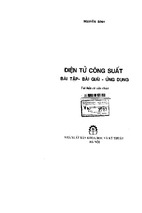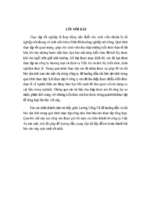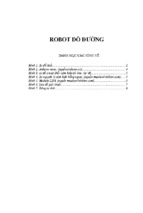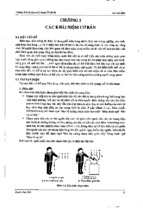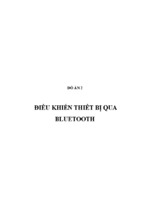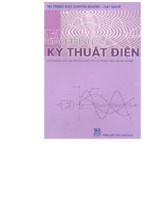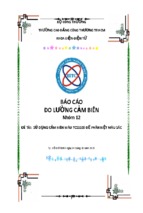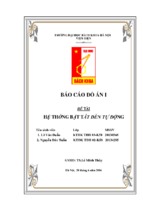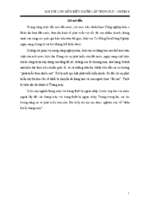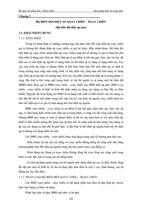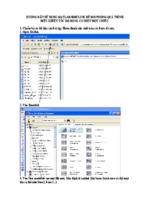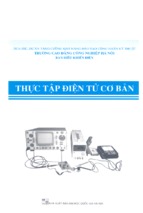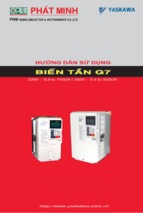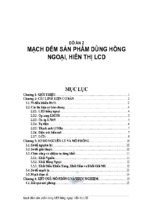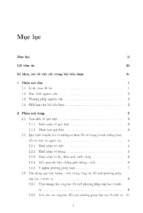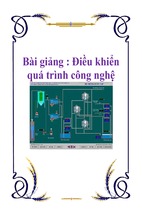HYBRID MOBILE ROBOT SYSTEM:
INTERCHANGING LOCOMOTION AND
MANIPULATION
by
PINHAS BEN–TZVI
A thesis submitted in conformity with the requirements
for the degree of Doctor of Philosophy
Graduate Department of Mechanical and Industrial Engineering
University of Toronto
© Copyright by Pinhas Ben-Tzvi, 2008
HYBRID MOBILE ROBOT SYSTEM:
INTERCHANGING LOCOMOTION AND MANIPULATION
Doctor of Philosophy
Pinhas Ben-Tzvi
Department of Mechanical and Industrial Engineering
University of Toronto, 2008
ABSTRACT
This thesis presents a novel design paradigm of mobile robots: the Hybrid
Mobile Robot system. It consists of a combination of parallel and serially connected
links resulting in a hybrid mechanism that includes a mobile robot platform for
locomotion and a manipulator arm for manipulation, both interchangeable functionally.
All state-of-the-art mobile robots have a separate manipulator arm module
attached on top of the mobile platform. The platform provides mobility and the arm
provides manipulation. Unlike them, the new design has the ability to interchangeably
provide locomotion and manipulation capability, both simultaneously. This was
accomplished by integrating the locomotion platform and the manipulator arm as one
entity rather than two separate and attached modules. The manipulator arm can be used
as part of the locomotion platform and vice versa. This paradigm significantly enhances
functionality.
The new mechanical design was analyzed with a virtual prototype that was
developed with MSC Adams Software. Simulations were used to study the robot’s
enhanced mobility through animations of challenging tasks. Moreover, the simulations
were used to select nominal robot parameters that would maximize the arm’s payload
ii
capacity, and provide for locomotion over unstructured terrains and obstacles, such as
stairs, ditches and ramps.
The hybrid mobile robot also includes a new control architecture based on
embedded on-board wireless communication network between the robot’s links and
modules such as the actuators and sensors. This results in a modular control architecture
since no cable connections are used between the actuators and sensors in each of the
robot links. This approach increases the functionality of the mobile robot also by
providing continuous rotation of each link constituting the robot.
The hybrid mobile robot’s novel locomotion and manipulation capabilities were
successfully experimented using a complete physical prototype. The experiments
provided test results that support the hypothesis on the qualitative and quantitative
performance of the mobile robot in terms of its superior mobility, manipulation,
dexterity, and ability to perform very challenging tasks. The robot was tested on an
obstacle course consisting of various test rigs including man–made and natural
obstructions that represent the natural environments the robot is expected to operate on.
iii
To Annette, Timor and my Family
iv
ACKNOWLEDGEMENT
This thesis is the result of four years of work whereby I have been accompanied
and supported by many people. It is a pleasant aspect that I have now the opportunity to
express my gratitude to all of them.
I would first like to thank my supervisors, Professor Andrew A. Goldenberg and
Professor Jean W. Zu. I owe them a great deal of gratitude for showing me their
enthusiasm and integral view on research and their mission for providing only the
highest quality work and not less. Besides being exceptional supervisors, they were
remarkably supportive and understanding not only with the regular academic activities,
but also with their dedicated support during life hardships. I am very thankful that I have
come to get to know them in my life. At the same note, I would like to extend a special
gratitude to Mrs. Elizabeth Catalano for her dedicated help and support. Her remarkable
professional aptitude and friendly approach greatly contributed.
In the lab, I was surrounded by knowledgeable and friendly people who helped
me daily. Many thanks to my colleagues Dr. John Yeow, Dr. William Melek, Dr.
Peyman Najmabadi, Dr. Cyrus Raoufi, Dr. Danny Ratner, Sadath Malik, Masatetsu
Wake, Shingo Ito, Dr. Helei Wu, Dr. Hong Zhao, Yi Li, and Hong Xia from the
Robotics and Automation Laboratory at the University of Toronto; and to Alireza Hariri,
Peyman Honarmandi,
Parag Dhar, Andrew Sloboda and Hansong Xiao from the
Vibration and Computational Dynamics Laboratory at the University of Toronto.
I am grateful to Engineering Services Inc. (ESI) for providing me with a highly
professional and nurturing environment, where I was successfully able to integrate the
Hybrid Mobile Robot (HMR) prototype and also for providing their resources and
v
premises for performing some of the robot testing. Special thanks to Kevin Wang of ESI
for his contributions and help with implementing the control hardware architecture for
the HMR. Specifically, for providing the detail design of the electrical boards, the OCU
and electrical wiring. I would also like to thank Matt Gryniewski, Rob Stehlik, Dr. Liang
Ma and Dr. Jun Lin from ESI for their help.
I am thankful to the Department of Mechanical and Industrial Engineering at
University of Toronto for their support. Special thanks to Prof. Pierre Sullivan, Associate
Chair of Graduate Studies, Brenda Fung, Graduate Studies Assistant & Coordinator, and
the Department Chair, Prof. Anthony N. Sinclair for their outstanding support and
exceptional professional aptitude.
I would like to profoundly thank Annette, my love and best friend, whose
presence, companionship and dedicated support helped make the completion of this
work possible. And to my adorable daughter Timor, you are always in my heart and
mind! I am deeply thankful and lucky to be blessed with a smart, beautiful and
understanding daughter.
I am grateful for my parents Jacob and Sara and my brothers Joseph, Israel, and
Aaron for their support, understanding, and trust towards my long journey away from
home.
vi
TABLE OF CONTENTS
ABSTRACT ..........................................................................................................................II
ACKNOWLEDGEMENT ........................................................................................................ V
TABLE OF CONTENTS ...................................................................................................... VII
LIST OF FIGURES ...............................................................................................................IX
LIST OF TABLES.................................................................................................................XI
CHAPTER 1: INTRODUCTION .............................................................................................. 1
1.1 Preface .......................................................................................................................... 1
1.2 Objective....................................................................................................................... 2
1.3 Overview of the Dissertation ........................................................................................ 3
1.4 Contributions ................................................................................................................ 4
CHAPTER 2: BACKGROUND................................................................................................ 8
2.1 Review of Tracked Mobile Robots............................................................................. 11
2.2 Analysis of Issues and Related Research Problems and Proposed Solutions............. 14
CHAPTER 3: MECHANICAL DESIGN PARADIGM.............................................................. 18
3.1. Description of the Design Concept............................................................................ 18
3.1.1 Concept Embodiment ...................................................................................... 19
3.1.2 Modes of Operation ......................................................................................... 20
3.1.3 Maneuverability............................................................................................... 21
3.1.4 Manipulation.................................................................................................... 22
3.1.5 Traction............................................................................................................ 24
3.1.6 Additional Embodiments of the Concept ........................................................ 24
3.2 Mechanical Design Architecture ................................................................................ 26
3.3 Motor Layout and Driving Mechanisms..................................................................... 30
3.4 Base link 1 - Tracks .................................................................................................... 32
3.5 Built-in Dual-operation Track Tension and Suspension Mechanism......................... 34
CHAPTER 4: MODELLING AND DYNAMIC SIMULATIONS ................................................ 37
4.1 Robotic System Modelling and Postprocessing ......................................................... 37
4.1.1 Virtual Prototyping and Simulations Using ADAMS Software...................... 37
4.1.2 Model Structure ............................................................................................... 39
4.1.3 Simulations and Postprocessing ...................................................................... 42
4.2 Simulation Results and Discussion............................................................................. 42
4.2.1 Mobility Characteristics Analysis - Animation Results .................................. 42
4.2.2 Analysis of Track Tension and Suspension Mechanism ................................. 51
4.2.3 Analysis of Motors Torque Requirements....................................................... 53
4.2.4 End–Effector Payload Capacity Analysis........................................................ 59
vii
CHAPTER 5: CONTROL SYSTEM DESIGN PARADIGM ...................................................... 63
5.1 On-Board Wireless Sensor/Actuator Control Paradigm............................................. 64
5.1.1 On-Board Inter-segmental RF Communication Layout .................................. 64
5.1.2 RF Hardware for the Hybrid Mobile Robot .................................................... 66
5.2 Electrical Hardware Architecture ............................................................................... 71
5.2.1 Controllers, Drivers, Sensors and Cameras Layout......................................... 71
5.2.2 Power System and Signal Flow Design and Implementation.......................... 72
5.2.3 Sensor Processor Board ................................................................................... 79
5.3 Robot DOF Coordination and Operator Control Unit (OCU) .................................... 80
CHAPTER 6: EXPERIMENTAL SETUP AND RESULTS ........................................................ 84
6.1 Research Hypothesis Validation................................................................................. 84
6.2 Performance Metrics as Design Targets ..................................................................... 85
6.3 Robot Configurations for Manipulation ..................................................................... 87
6.4 Mobility/ Maneuverability Characteristics Testing and Validation ........................... 88
6.5 Traction Configurations.............................................................................................. 90
6.6 Traversing Cylindrical Obstacles ............................................................................... 90
6.7 Stair Climbing and Descending .................................................................................. 91
6.7.1 Stair Climbing.................................................................................................. 91
6.7.2 Stair Descending.............................................................................................. 91
6.7.3 Stair Descending – Other Configurations........................................................ 94
6.8 Step Obstacle Climbing .............................................................................................. 96
6.8.1 Climbing with Tracks ...................................................................................... 96
6.8.2 Climbing with Link 2....................................................................................... 96
6.9 Step Obstacle Descending .......................................................................................... 98
6.9.1 Descending with Links 2 and 3 ....................................................................... 99
6.9.2 Descending with Base link Tracks ................................................................ 100
6.10 Ditch Crossing ........................................................................................................ 102
6.11 Platform Lifting and Carrying Capacity Testing .................................................... 103
6.12 Simultaneous Locomotion and Manipulation......................................................... 104
6.12.1 Simultaneous Climbing and Manipulation .................................................. 104
6.12.2 Simultaneous Descending and Manipulation .............................................. 105
6.13 Mobility Configurations for Rubble Pile Climbing................................................ 106
6.14 Robot Configurations for Manipulation ................................................................. 108
6.14.1 End–Effector Payload Capacity Testing...................................................... 108
6.14.2 Adaptive Manipulation ................................................................................ 111
6.15 Robot DOF Speed Runs Testing and Measurement ............................................... 113
CHAPTER 7: CONCLUSIONS ........................................................................................... 114
7.1 Summary................................................................................................................... 114
7.2 Future Research ........................................................................................................ 118
REFERENCES .................................................................................................................. 120
APPENDIX A: HYBRID MOBILE ROBOT SPECIFICATIONS ............................................. 129
viii
LIST OF FIGURES
Fig. 2.1: Review of tracked mobile robots. ..................................................................... 13
Fig. 3.1: (a) closed configuration; (b) open configuration; (c) exploded view. .............. 20
Fig. 3.2: Configurations of the mobile platform for mobility purposes.......................... 22
Fig. 3.3: Configuration modes for manipulation............................................................. 23
Fig. 3.4: Configurations for enhanced traction ............................................................... 24
Fig. 3.5: Additional possible embodiments of the design concept.................................. 25
Fig. 3.6: Deployed-links configuration mode of the mobile robot.................................. 28
Fig. 3.7: Stowed-links configuration mode of the mobile robot (top/bottom covers
removed). ................................................................................................................. 29
Fig. 3.8: Open configuration mode and general dimensions (front and top views – all
covers removed)....................................................................................................... 32
Fig. 3.9: Isometric view of base link track showing internal pulley arrangement .......... 33
Fig. 3.10: Side view of base link track showing general pulley arrangement and track
tension/suspension mechanism................................................................................ 35
Fig. 3.11: A picture of the physical prototype: (a) stowed-links configuration mode; (b)
open configuration mode. ........................................................................................ 36
Fig. 4.1: Virtual product development diagram. ............................................................. 39
Fig. 4.2: ADAMS virtual prototype model structure. ..................................................... 41
Fig. 4.3: Configurations for manipulation....................................................................... 43
Fig. 4.4: Surmounting circular obstacles......................................................................... 44
Fig. 4.5: Stair climbing.................................................................................................... 45
Fig. 4.6: Stair descending................................................................................................ 46
Fig. 4.7: Step obstacle climbing with tracks. .................................................................. 46
Fig. 4.8: Step obstacle climbing with links 2 and 3. ....................................................... 47
Fig. 4.9: Step descending. ............................................................................................... 48
Fig. 4.10: Ditch crossing. ................................................................................................ 49
Fig. 4.11: Lifting tasks. ................................................................................................... 50
Fig. 4.12: Flip-over scenario. .......................................................................................... 51
Fig. 4.13: Top ((a) - track tension) and bottom ((b) - suspension) spring array force
distribution............................................................................................................... 53
Fig.4.14: Link 2 motor torque requirement – step obstacle climbing with tracks (via joint
1). ............................................................................................................................. 55
Fig. 4.15: Link 2 motor torque requirement – Step obstacle climbing with link 2. ........ 56
Fig. 4.16: Link 3 motor torque requirement – (a) Step obstacle climbing with tracks (via
joint 2); (b) Step obstacle climbing with link 3. ...................................................... 57
Fig. 4.17: Driving pulley motor torque requirement – incline condition........................ 58
Fig. 4.18: Platform COG vs. load capacity. .................................................................... 61
Fig. 4.19: Possible configurations for manipulation. ...................................................... 62
ix
Fig. 5.1: Embeddable flat antennas for video and data RF communication. .................. 66
Fig. 5.2: On-board wireless communication layout and design details (all covers
removed). ................................................................................................................. 67
Fig. 5.3: Hardware architecture: (a) right base link track; (b) left base link track; (c) link
3 – gripper mechanism............................................................................................. 69
Fig. 5.4: XBee OEM RF module..................................................................................... 70
Fig. 5.5: Sensors and cameras layout. ............................................................................. 72
Fig. 5.6: Li-Ion battery packs assembly. ......................................................................... 74
Fig. 5.7: Power/signal distribution board for base link tracks. ....................................... 76
Fig. 5.8: Power/signal distribution board for gripper mechanism................................... 78
Fig. 5.9: Sensor processor board. .................................................................................... 80
Fig. 5.10: Operator control unit (OCU) architecture and robot degrees of freedom....... 83
Fig. 6.1: Configurations for manipulation....................................................................... 87
Fig. 6.2: Configurations of the hybrid robot for mobility purposes................................ 89
Fig. 6.3: Configurations for enhanced traction. .............................................................. 90
Fig. 6.4: Surmounting circular obstacles......................................................................... 92
Fig. 6.5: Stair climbing.................................................................................................... 93
Fig. 6.6: Stair descending................................................................................................ 94
Fig. 6.7: Stair descending – other configurations............................................................ 95
Fig. 6.8: Step obstacle climbing with tracks. .................................................................. 97
Fig. 6.9: Step obstacle climbing with links 2 and 3. ....................................................... 98
Fig. 6.10: Step descending with links 2 and 3................................................................. 99
Fig. 6.11: Step descending with base link tracks – tracks flip on the table................... 100
Fig. 6.12: Step descending with base link tracks – tracks rotate on the table. .............. 101
Fig. 6.13: Ditch crossing. .............................................................................................. 102
Fig. 6.14: Lifting capacity testing. ................................................................................ 103
Fig. 6.15: Simultaneous climbing and manipulation..................................................... 105
Fig. 6.16: Simultaneous descending and manipulation................................................. 106
Fig. 6.17: Combined mobility configurations for rubble pile climbing (cont’d). ......... 108
Fig. 6.18: Configurations for manipulation................................................................... 110
Fig. 6.19: Adaptive manipulation configuration steps. ................................................. 112
x
LIST OF TABLES
Table 2.1: Table of Comparison. .................................................................................... 17
Table 3.1: Robot Design Specifications. ........................................................................ 35
Table 5.1: Robot Motion Specifications. ........................................................................ 83
Table 6.1: Robot DOF Speed Measurements. .............................................................. 113
xi
CHAPTER 1
INTRODUCTION
1.1 Preface
The use of mobile robots is growing very rapidly in numerous applications such
as planetary exploration, police operations (e.g., EOD – Explosive Ordnance Disposal),
military operations (e.g., reconnaissance missions, surveillance, neutralization of IED),
hazardous site exploration, and more. The use of Unmanned Ground Vehicles (UGVs) in
Urban Search and Rescue (USAR) and Military Operations on Urbanized Terrain
(MOUT) is gaining popularity because the mobile robots can be sent ahead or in place of
humans, act on the surroundings with a manipulator arm or other active means attached
to an arm, collect data about its surroundings, and send it back to the operator with no
risks posed to humans.
In the past decade, new designs of mobile robots have emerged and were
demonstrated by both academia and industry. This work presents a new paradigm to
mobile robot design for locomotion and manipulation purposes for a wide range of
applications and practical situations. Typically, a mobile robot’s structure consist of a
mobile platform that is propelled with the aid of a pair of tracks , wheels or legs, and a
manipulator arm attached on top of the mobile platform to provide the required
manipulation capability (neutralization of bombs or landmines, manipulation of
hazardous materials, etc). However, the presence of an arm limits the mobility. On the
other hand, there are several designs of mobile robots that have pushed further the
mobility state of the art such as PackBot [3],[4] and Chaos [24] including the ability to
1
return itself when flipped-over, but this may not be possible if the robot is equipped with
a manipulator arm. This gap is bridged in my approach by providing a new mobile robot
design that provides locomotion and manipulation capabilities simultaneously and
interchangeably.
The new design is based on compounded locomotion and manipulation. The
design approach is that the platform and manipulator arm are interchangeable in their
roles in the sense that both can support locomotion and manipulation in several modes of
operation as discussed in Subsection 3.1.2. Moreover, the design architecture enables the
robot to flip over and continue to operate.
The development of the hybrid mobile robot system covers mechanics of systems
design, system dynamic modeling and simulations, design optimization, computer
architecture, and control system design.
1.2 Objective
The objective of this work was to develop a new paradigm for the design of
mobile robots in order to solve foremost existing problems and overcome barriers in the
use of mobile platforms for rough terrain applications. The major issues addressed were
related to design of mobile robots operating on rough terrain. The aim was to
significantly increase robot’s mobility and manipulability functionalities while
significantly increasing its reliability, and reducing its complexity and cost. Extensive
experimental results with the aid of a physical prototype that embodies the proposed
design paradigm show that the proposed solution for a mobile robotic system design
2
significantly exceeds the mobility and manipulation capabilities demonstrated by other
existing systems.
The hypothesis of the design paradigm is that the interchangeability of the
locomotion and manipulation functions significantly benefits the mobile robot’s overall
operation and function.
A physical prototype of the hybrid mobile robot system was developed and
integrated as an experimental tool to run extensive testing required to assess the system’s
mobility and manipulation capabilities. The test results successfully corroborated the
hypothesis. Specifically, it was shown that the simulation results coincide with the
experimental results of the hybrid mobile robot system.
1.3 Overview of the Dissertation
This dissertation is organized as follows. Chapter 2 provides a background to the
field of mobile robots along with examples of existing types of design architectures. It
also introduces a conceptual function-oriented analysis that outlines a summary of
existing issues related to tracked mobile robots, their related research problems and
proposed solutions. The new design paradigm resulting from the analysis of the issues
identified in Chapter 2 is described in Chapter 3 along with presentation of several other
possible embodiments of the proposed design approach. To realize the proposed design,
a detailed mechanical design embodiment of the mechanically hybrid mobile robot is
also described in detail. It includes the design of embedded and interchangeable track
tension and suspension mechanism. In Chapter 4, the mechanical design is modeled and
thoroughly analyzed in order to study the robot’s functionality and optimize the design
3
by defining suitable and optimal operating parameters such as required motor torques,
manipulator end-effector capacity, etc. Chapter 5 outlines the development of a new
systematic approach for a modular control architecture that dramatically increases the
functionality of the mobile robot. This is done by enabling wireless (RF) communication
between the robot’s subsystems and modules such as the actuators and sensors. The
experimental setup and results that corroborate the hypothesis of this work are discussed
in Chapter 6. The setup includes an obstacle course that consists of various test rigs
including man-made and natural obstructions. The experiments performed demonstrate
the robot’s superior mobility, functionality and durability characteristics. Chapter 7
presents the conclusions.
1.4 Contributions
The proposed research work provides solutions to a series of major issues related
to design and operation of mobile robots operating on rough terrain. The proposed
paradigm for mobile robot system design leads to functionality and capability that far
exceeds those of state-of-the-art existing systems. The research objectives, as presented
in Subsection 1.2, were achieved through the following major contributions:
A new design paradigm for a mobile robot system where the mobile robot’s
locomotion platform and the manipulator arm are designed and packaged as one
entity rather than two separate and attached modules. Specifically, the locomotion
platform can be used as a manipulator arm and vice versa. This design approach
results in a hybrid mechanism that is able to provide locomotion and manipulation
capability simultaneously and interchangeably, using the same actuators. The robot
4
links’ interchangeability to provide the functions of the mobile platform and
manipulator arm leads to fewer components while at the same time the actuator
strength capacity for manipulation purposes considerably increases due to the hybrid
nature of the mechanical structure. This approach results in a simpler and more
robust design, significant weight reduction, greater end-effector payload capability,
and potentially lower production cost.
New design features that significantly enhance the mobile robot’s overall
functionality and operation over rough terrain:
•
The ability to deploy/stow the manipulator arm from either side of the platform;
•
Integration of passive wheels into the robot joints in order to support the robot
links when used for locomotion/traction;
•
Robot links with revolute joints that are able to provide continuous 360o rotation.
•
Embed RF antennas without sticking out or protruding from the platform.
•
A new design method where all mobile robot links and the end-effector are
nested into each other to allow complete symmetry of the platform’s geometry.
This design architecture eliminates the arm’s exposure to the surroundings,
thereby minimizing the risk of damage. The fully symmetric structure eliminates
the need of additional active means for self-righting when it falls or flips over.
•
Design of rounded and pliable side covers attached to the sides of the platform to
prevent immobilization as well as to absorb some of the energy resulting from
falling or flipping over of the robot.
•
A new design of embedded interchangeable track tension and suspension
mechanism in the mobile robot base links that provides the locomotion
5
subsystem and the track tensioning system of the robot. The mechanism accounts
for the symmetric nature of the design and operation of the mobile robot.
•
Design of special flat antennas embedded in the side covers for data RF signals
and audio/video RF signals. The flat shape of the antennas and their location in
the side covers maintains the symmetric nature of the entire hybrid platform.
A computer aided procedure to develop and analyse a virtual prototype with Adams
for dynamic motion simulations of mobile robots. This development tool can be
utilized to considerably reduce the physical prototype development time and cost
while aiding with demonstrating the mobile robots’ expected functionality for design
optimization purposes and derivation of optimal operating parameters.
A new design of on-board wireless sensor/actuator control interfaces. This includes
the development and implementation of a new control paradigm for on-board RF
communication network among the robot’s links and subsystems. This approach
eliminated the need for any wire, cable loop, and slip-ring mechanical connections
between different parts of a given mechanical system. The module-specific RF
communication and standalone power supply capabilities allow for an efficient
modular mechanical as well as control architecture.
The standalone power supply in each link includes the design of modular high
current discharge Li-Ion battery packs.
The implementation of the control paradigm includes the design of power and
data signal distribution boards used in each of the base link tracks in the hybrid
robot. The layered custom design of the distribution boards dramatically reduce
6
the footprint while providing sufficient input/output interfaces for a large number
of on-board devices as well as attachable devices for the mobile robot.
Design of multi-DOF Operator Control Unit (OCU) that consists of two control
sticks in order to simultaneously coordinate the robot degrees of freedom.
7
CHAPTER 2
BACKGROUND
Mobile robots were used for USAR activities in the aftermath of the World Trade
Center (WTC) attack on September 11, 2001 [1],[2]. The mobile robots were used
mainly for searching of victims, searching paths through the rubble that would be
quicker than to excavate, structural inspection and detection of hazardous materials. In
each case, small mobile robots were used because they could go deeper than traditional
search equipment, could enter a void space that may be too small for a human or search
dog, or could enter a place that posed great risk of structural collapse. Among the
tracked robots that were used (such as Foster-Miller’s Solem and Inuktun’s Micro-Tracs
and VGTV), the capability was limited in terms of locomotion and mobility, and more
so if one considers requirements of manipulation with an arm mounted on the mobile
robot, which were not used at all. Some of the major problems with some of the robots
used on the rubble pile searches were the robot flipping over or getting blocked by
rubbles into a position from where it could not be righted or moved at all.
Increasingly, mobile robotic platforms are being proposed for high-risk missions
for law enforcement and military applications (e.g., Iraq for IEDs – Improvised
Explosive Devices), hazardous site clean-ups, and planetary explorations (e.g., Mars
Rover). These missions require mobile robots to perform difficult locomotion and
dexterous manipulation tasks. During such operations loss of wheel traction, leading to
8
entrapment, and loss of stability, leading to flip-over, may occur, which results in
mission failure.
Various robot designs with actively controlled traction [3],[4],[5],[6],[7], also
called “articulated tracks”, were found to somewhat improve rough-terrain mobility. The
mobility gains due to the articulated track mechanism yield a larger effective track radius
for obstacle negotiation. Efforts are continuously made in designing robots that allow a
wider control over COG (Center of Gravity) location [10] to produce robustness to
effects attributed to terrain roughness. This was achieved by designing the robot with
actively articulated suspensions to allow wider repositioning of the COG in real-time.
However, the implementations of such solutions may result in complex designs that may
reduce robot’s operational reliability, and also increase its cost.
Mobile robot mechanical design architectures can be classified into several major
categories such as Tracked, Wheeled, Legged, Wheel-Legged, Leg-Wheeled,
Segmented, Climbing and Hopping. The dozens of available mobile robots
encompassing the aforementioned categories represent a fraction of the existing body of
robotics research demonstrated by industry, research institutes, and universities.
Therefore, due to the lack of consistent performance metrics reported by researchers, it
would be very difficult to conduct performance comparisons between different robot
architectures. A brief list of robots from each category is outlined as follows: (a) Tracked
robots: iRobot “Packbot” [3],[4], Foster-Miller “TALON” [21], CMU “Gladiator” [25],
Sandia “microcrawler” [26], ESI “MR-1 & MR-5” [19], Remotec’s Andros series
[5],[6][7]; (b) Wheeled robots: National Robotics Engineering Consortium “Spinner”
[27], University of Minnesota “SCOUT” [28],[29], Stanford “Stanley” [30], JPL
9
- Xem thêm -

